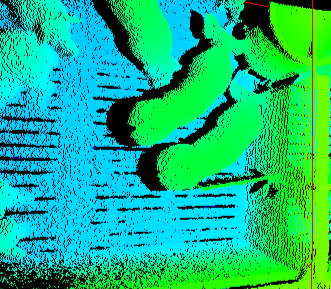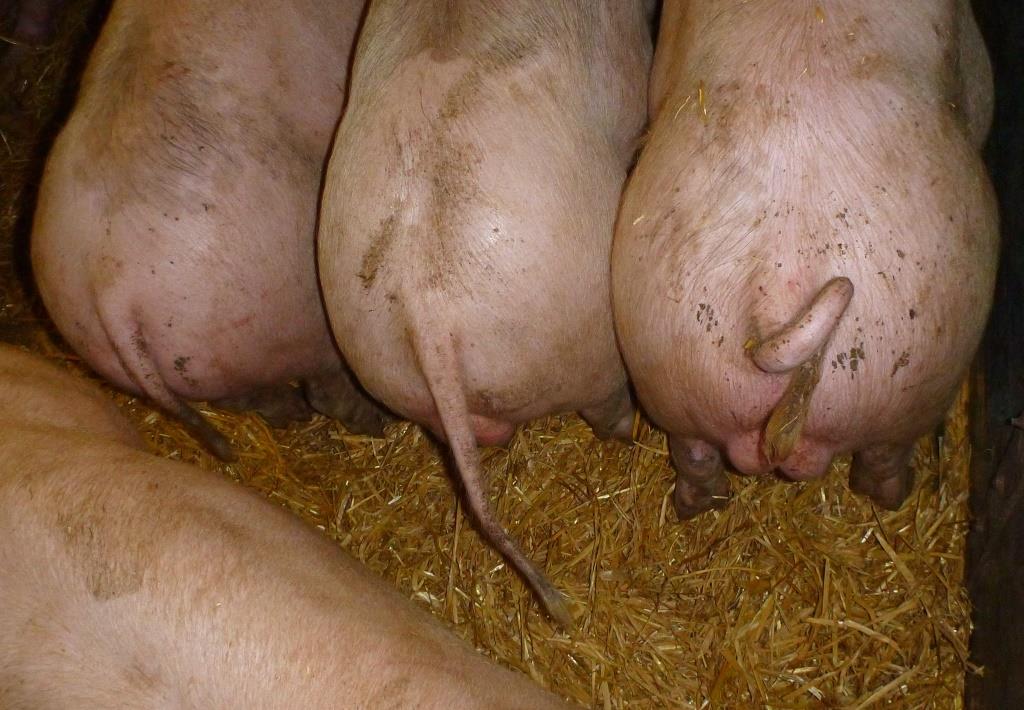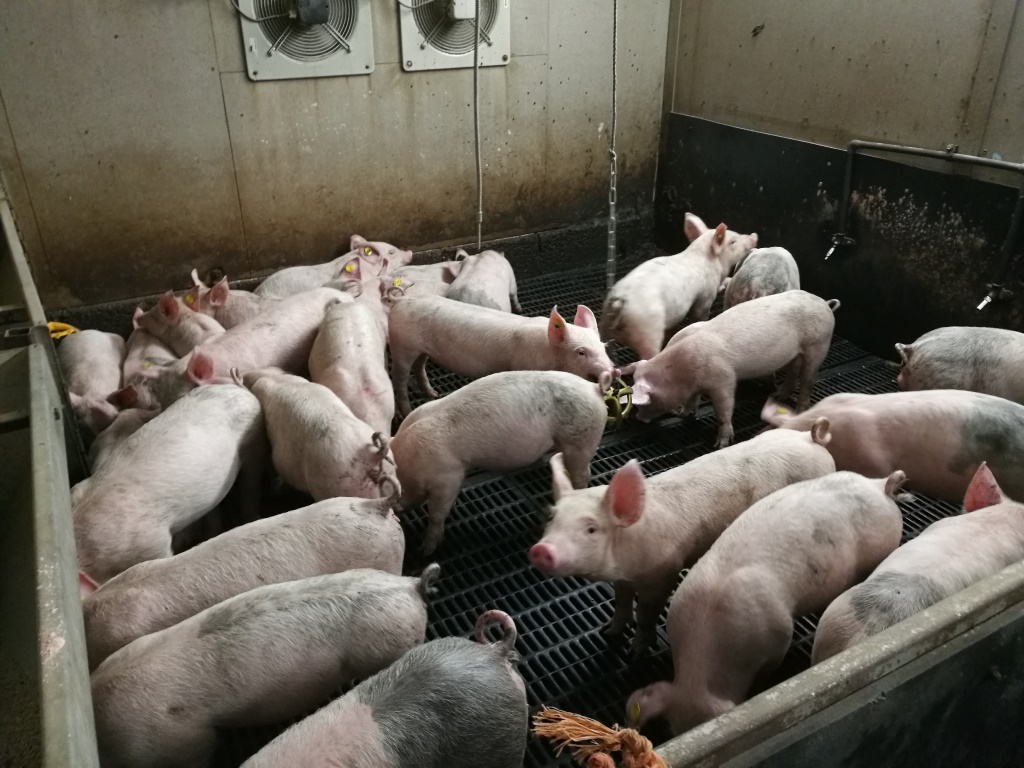



3D camera technology could help to predict and eliminate tail biting in pigs
Dr Rick D'Eath discusses his latest research into how 3D video monitoring of tail posture could help to predict and prevent tail biting outbreaks in pigs.Winterbotham Darby’s annual Animal Health and Welfare Day is an event that brings together experts from the University of Bristol and other credible speakers to showcase a range of collaborative opportunities between industry and academia, with a cross-species agenda. In its fourth year, the event will take place is hosted by the Bristol Vet School at The Bristol hotel on Thursday 7 March with a visit to Bristol University’s Langford Veterinary site on 8 March 2019.
This year’s agenda covers swine rearing issues from developing high welfare farrowing systems, to the threats of African swine fever, to the work of Dr Rick D’Eath, who is investigating the value of 3D camera technology in eliminating tail biting.
Rick, has worked as a research scientist at Scotland’s Rural College (SRUC) since completing his PhD in 1997. He began his studies at Oxford University, studying Zoology and completed his PhD with renowned scientist, Marian Dawkins. Rick investigated the social behaviour of laying hens (individual and flock-mate recognition), and has also worked with pigs, researching aggression, mounting, farrowing systems and dry sow hunger.
Rick has become increasingly excited by the potential of technology to provide new information about behaviour which is what led to his latest research endeavours with 3D camera technology which he will be presenting at the event this week.
In an interview with The Pig Site, Rick discusses how his research has progressed and what this could mean for pigs and producers.

What is the focus of your current research?
We’re exploring the idea that ‘low tail posture’ – when pigs hold their tails down low against the body – might be an early warning sign for tail biting. Having found evidence of this in the literature, we have also found this in two separate studies now (Wedin et al 2018 and Lahrmann et al 2018a). Low tail posture does increase in the days before an outbreak would usually be recognised by a farmer, suggesting it has potential to be an early warning sign. Scottish Government funding supported SRUC in this work.
We’re also developing the use of 3D camera technology, coupled with ‘machine vision’ algorithms to detect tail posture in the pig pen. Innovate UK and BBSRC funding supported an 18-month ‘proof of concept’ project called 3D tails (Sept 2016 – March 2018). During this project we worked with Innovent Technology Ltd, a small Scottish agri-tech company who sell a camera-based pig weighing system to monitor pig growth in the pen called ‘qscan’ (licensed for international sales through SKOV as ‘ProGrow’). I approached them for the project and once we got funding, they developed the tail posture detection algorithm we used.
Also helping us in that project were Agri-EPI Centre, Harbro and Sainsbury’s. We worked on an SRUC research farm using pigs with un-docked tails in an indoor slatted system in 23 production groups of about 30. We monitored pigs’ health, tail injuries and stepped in to stop and treat any outbreaks we saw. There were 15 of those groups that had outbreaks of tail biting.
The project worked really well, and we were able to show that the algorithm was about 75 percent accurate at detecting tail posture when checked by eye. The number of low tails also increased pre-outbreak (and declined after an outbreak), either observed by eye or using the 3D data (D’Eath et al., 2018; Wedin et al., 2018).
This project was followed up by another Innovate UK project called ‘TailTech’ which added to our existing partners: Garth Pig Practice; engineers, Ritchie Agricultural; pig breeders, JSR Genetics; and processor/producer co-op, Scottish Pig Producers.
This project is almost a year into three (April 2018 – March 2021). We’re putting up 3D cameras to collect tail posture data and visiting to score tails on diverse commercial farm systems (varying in group size, floor type, docked and un-docked tails etc). We’re getting onto lots of different farms to check the concept still holds true under varying conditions, and also to help us set the parameters for a prototype early warning system for farmers to use. This prototype will be tested in the last year of the project (2020-2021).

Why is tail biting such an important issue in pig production?
It impacts on pig health and welfare, because being bitten is painful, and bitten tails can become infected leading to further problems. All this is costly for farmers to deal with on farm, and infection can result in whole or part carcass condemnation, so financial loss is a major issue.
There is no simple cure to tail biting as there are many different causes. Although tail docking and use of enrichment materials are the best ways to reduce risk, neither are completely successful. Tail biting occurs in unpredictable outbreaks, whatever the system. We hope that a focus on early warning signs might help reduce this unpredictability.
Tail biting it is also a policy challenge: there has been a ban in the EU on the routine use of tail docking, allowing it as a ‘last resort’ only, since 2004. However, tail docking still remains in widespread use. There appears to be a crack-down in enforcement on this going on, so the question of how to manage un-docked pigs without biting is pressing.
How can the data gained from 3D video monitoring help to prevent tail biting and stop producers routinely tail docking?
Tail posture as an early warning sign looks to be a promising concept, but we need to check it works on a wider variety of farms. We hope that a reliable ‘early warning’ system will reduce uncertainty and unpredictability around tail biting outbreaks. It will help farmers to focus the time and place of their efforts to prevent tail biting before it really gets started in a group. It may give some the confidence to try stopping docking (assuming they have also improved their housing and management system to a point where this is feasible).
My Danish colleague Helle Lahrmann has shown (for the first time) that adding enrichment in response to early indicators of tail biting can reduce later biting (Lahrmann et al., 2018b) so, the ‘early intervention’ in response to ‘early warning signs’ idea does look to work.

Are 3D video monitoring systems something that all pig production units will be able to use?
We are testing the use of cameras in diverse systems, from large open barns with deep straw to smaller groups on slats, and so far so good. The growth monitoring aspect of camera systems has already proved to be useful for some producers who seek to understand and reduce variability in growth to achieve production goals more accurately. As we add in tail biting prediction, I believe it will interest still more farmers.
As the technology evolves in future, and we are able to add further functions – potential detection of unusual behaviour indicative of poor pen function or ill health – I believe we will see more farmers convinced of the value of having a camera system in place. Of course, staffing levels and staff training are also factors here: the value of cameras may depend on how often farm staff are able to inspect their pigs by eye, and what they are trained to look out for.
Does having such a system in the pig barn allow producers to meet the standards of higher welfare assurance schemes?
So far we don’t have any formal involvement with assurance schemes. However, I know that RSPCA Assured does not allow docking except under special circumstances. In special circumstances, farmers are given time to improve their farm and reduce risk factors before they are expected to return to un-docked production. I would think that these farmers might benefit from an early warning system.
How do you intend to further develop these systems in 2019 and beyond?
As I mentioned before, we will be working towards producing and testing a prototype tail biting early warning system ‘TailTech’. Subject to funding, we are also potentially looking to develop future projects which use 3D cameras to track pigs and record a greater range of behaviour. This could form the basis for adding more useful functions to help farmers predict and monitor a variety of potential problems.
Funding
Innovate UK.
BBSRC.
Scottish Government.
3D tails
Partners:
- Innovent Technology Ltd.
- Harbro (feed company).
- Agri-EPI Centre.
- Sainsbury’s.
TailTech
Partners:
- Innovent Technology Ltd.
- Harbro (feed company).
- Agri-EPI Centre.
- Sainsbury’s.
- Scottish Pig Producers.
- JSR Genetics.
- David Ritchie Implements Ltd.
- Garth Pig Practice Ltd.
| References | ||||
|---|---|---|---|---|
| D’Eath, R.B., Jack, M., Futro, A., Talbot, D., Zhu, Q., Barclay, D., Baxter, E.M. | ||||
| (2018) | Automatic early warning of tail biting in pigs: 3D cameras can detect lowered tail posture before an outbreak. PLoS ONE 13(4): e0194524. | |||
| Wedin, M., Baxter, E.M., Jack, M., Futro, A., D’Eath, R.B. | ||||
| (2018) | Early Indicators of Tail Biting Outbreaks in Pigs. Applied Animal Behaviour Science 208: 7-13. | |||
| Lahrmann, H.P., Hansen, C.F., D'Eath, R.B., Busch,M.E. Forkmann, B. | ||||
| (2018a) | Tail posture predicts tail biting outbreaks on pen level in weaner pigs. Applied Animal Behaviour Science 200, 29-35. | |||
| Lahrmann, H.P., Hansen, C.F., D´Eath, R.B., Busch, M.E., Nielsen, J.P. and Forkman, B. | ||||
| (2018b) | Early intervention with enrichment can prevent tail biting outbreaks in weaner pigs. Livestock Science 214: 272-277. |









